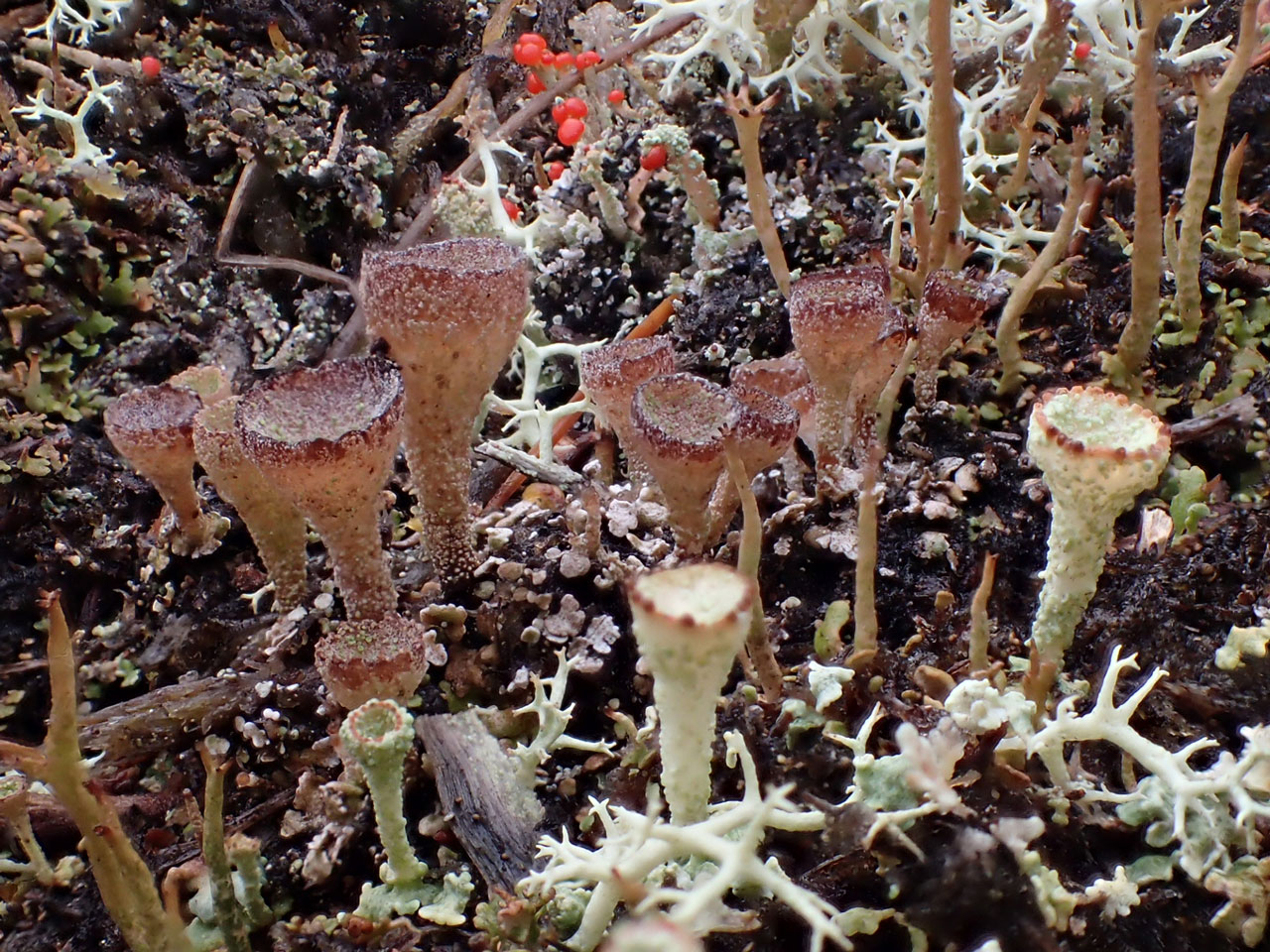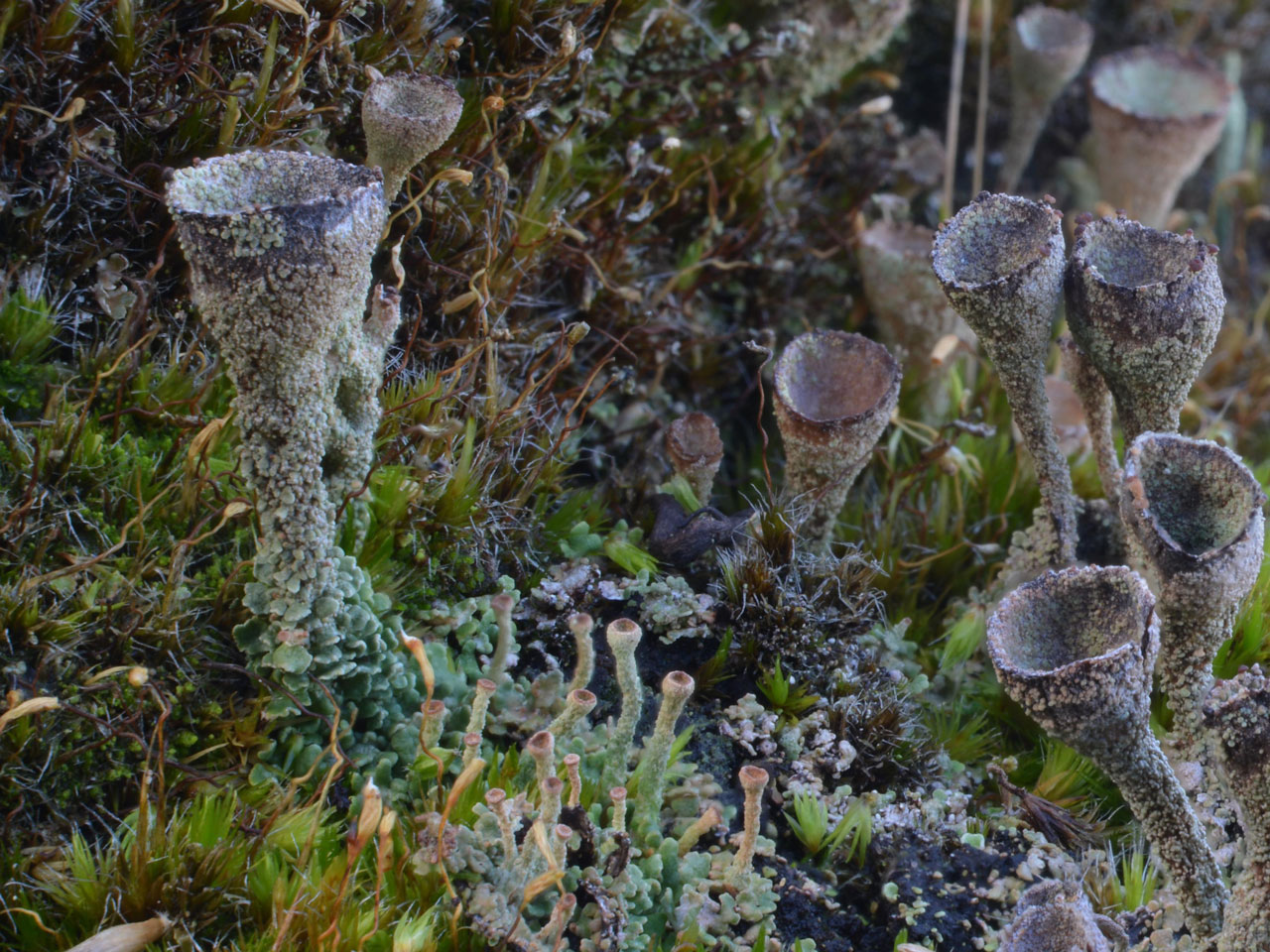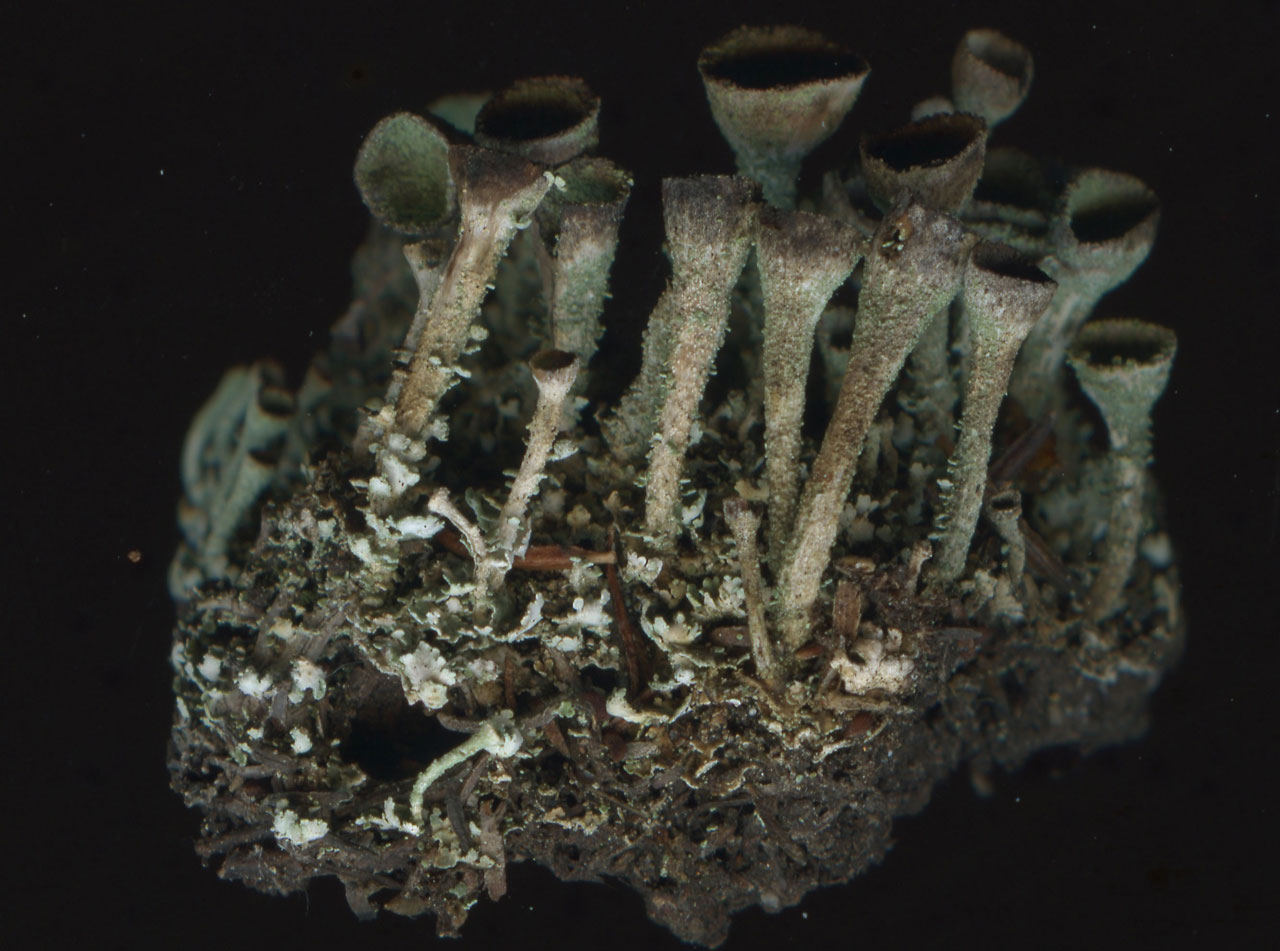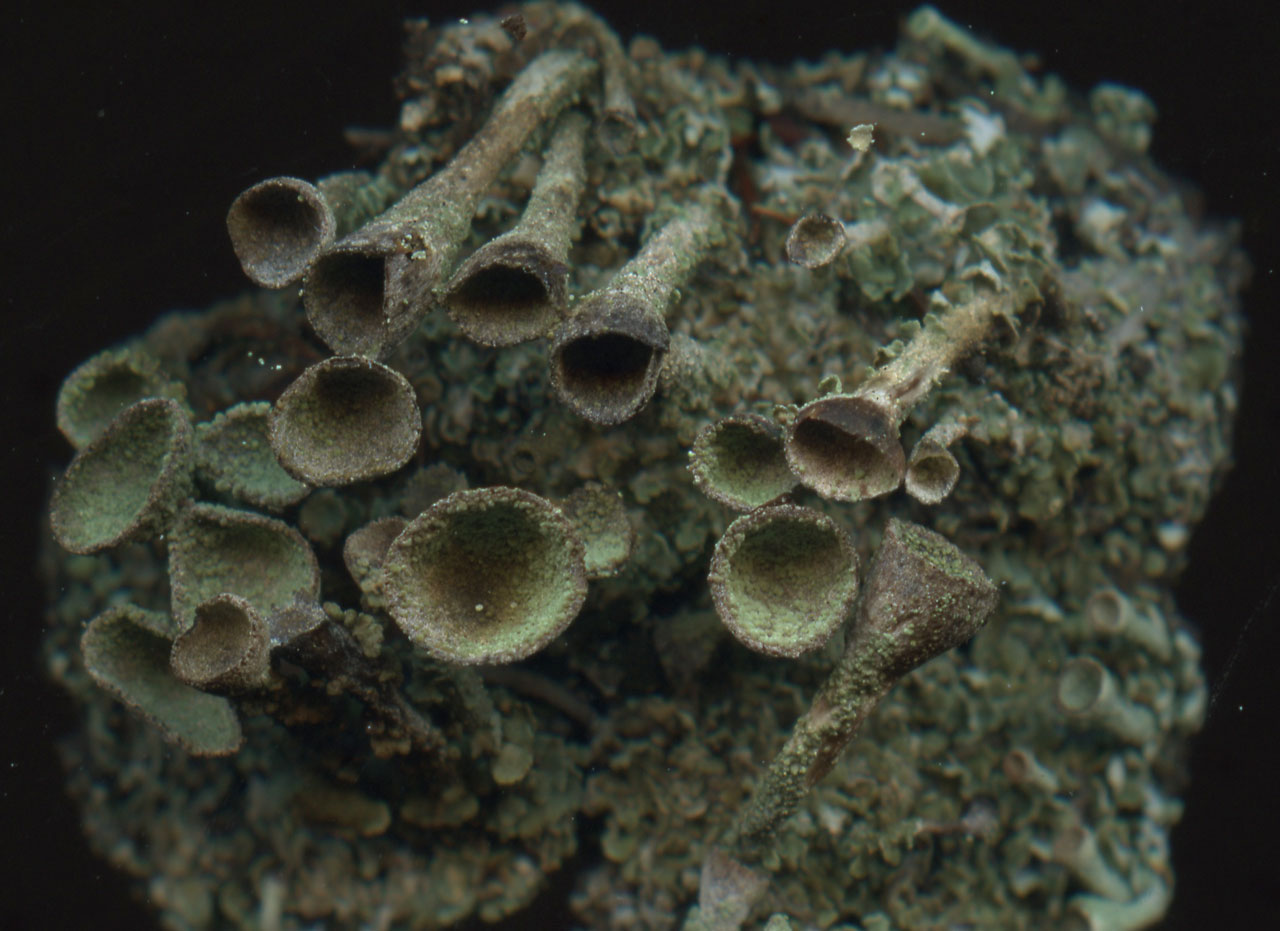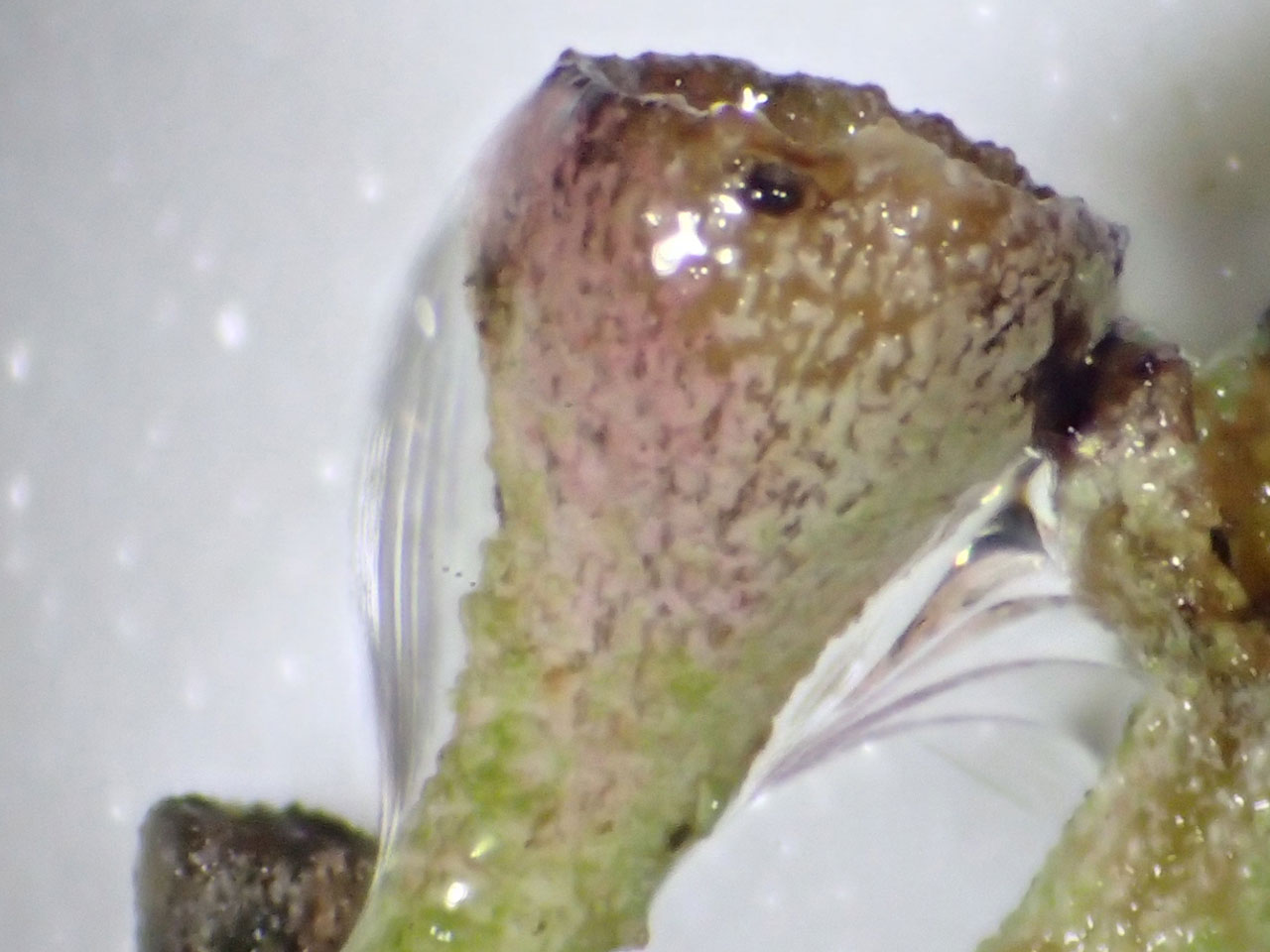A Pixie Cup within the difficult Cladonia grayi group, and included in the Cladonia chlorophaea s. lat. morphocomplex. The Cladonia grayi group can be distinguished from Cladonia chlorophaea s. str. by the browner colours, the exposed medulla pinkish brown and the presence of K and C reactions and UV fluorescence. Cladonia merochlorophaea shares a distinctive KC+ wine red reaction with Cladonia cryptochlorophaea but also has a C+ red reaction (best seen when damp) and is generally browner and more coarsely granular than C. cryptochlorophaea, but TLC is recommended for identification. Found in very acid heathland and moorland habitats and lignum.
Similar to Cladonia cryptochlorophaea and C. grayi, but greenish-brown with relatively large cups and producing rather varied granulose propagules and minute flaking squamules; sometimes entirely without soredia; the exposed medulla pinkish brown. The base of podetia are frequently strongly melanized. Thallus C+ red, K–, KC+ wine red, Pd± orange-red, UV+ faint blue (merochlorophaeic, 4-O-methylcryptochlorophaeic and ± fumarprotocetraric acids).
Part of the Cladonia chlorophaea/grayi aggregate, differentiated primarily by chemical characteristics; see under those species for more information. C. merochlorophaea shares the distinctive KC+ fleeting wine red reaction with C. cryptochlorophaea. The C+ red spot test is best seen on damp material. Generally browner and coarser than C. cryptochlorophaea, but TLC is recommended for identification. Cladonia merochlorophaea is very similar but is C+ yellow and KC–.
On acid humic soils, also on rotten wood, roots etc, typically on more acid substrates than the commoner Cladonia cryptochlorophaea.

Scattered but apparently frequent throughout Britain and Ireland
Pino-Bodas, R., Sanderson, N., Cannon, P., Aptroot, A., Coppins, B., Orange, A. & Simkin, J. (2021). Lecanorales: Cladoniaceae, including the genera Cladonia, Pilophorus and Pycnothelia. Revisions of British and Irish Lichens 19: 1-45. Link
Text by Neil A Sanderson, based on Pino-Bodas et al (2021)
